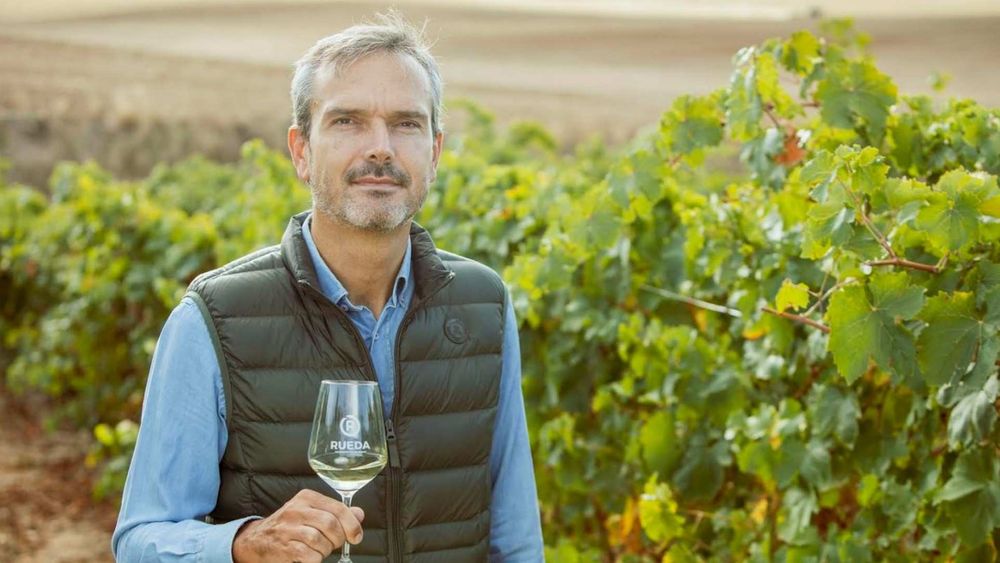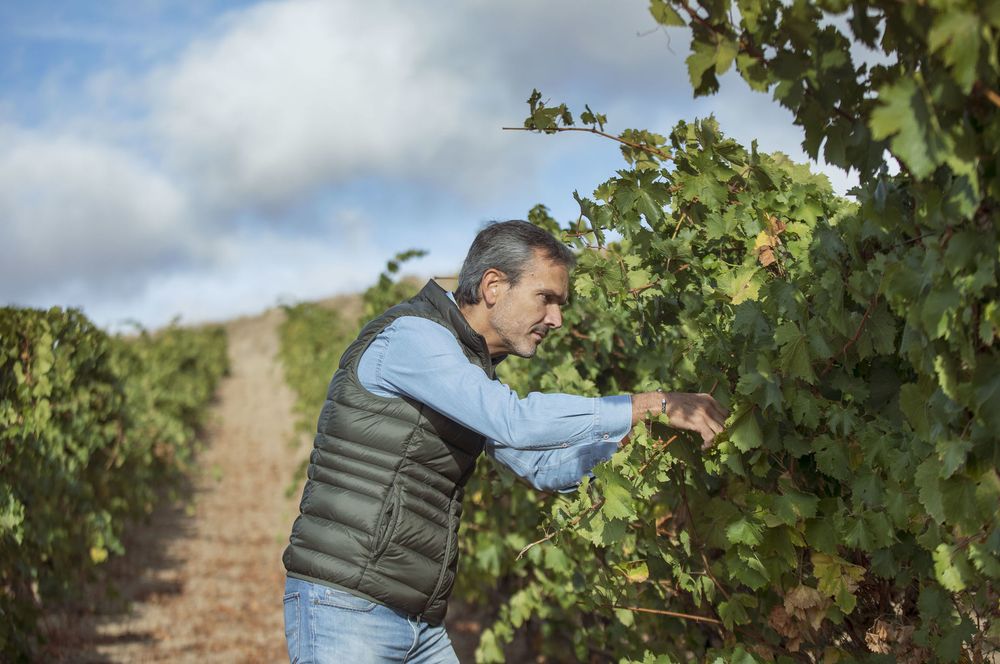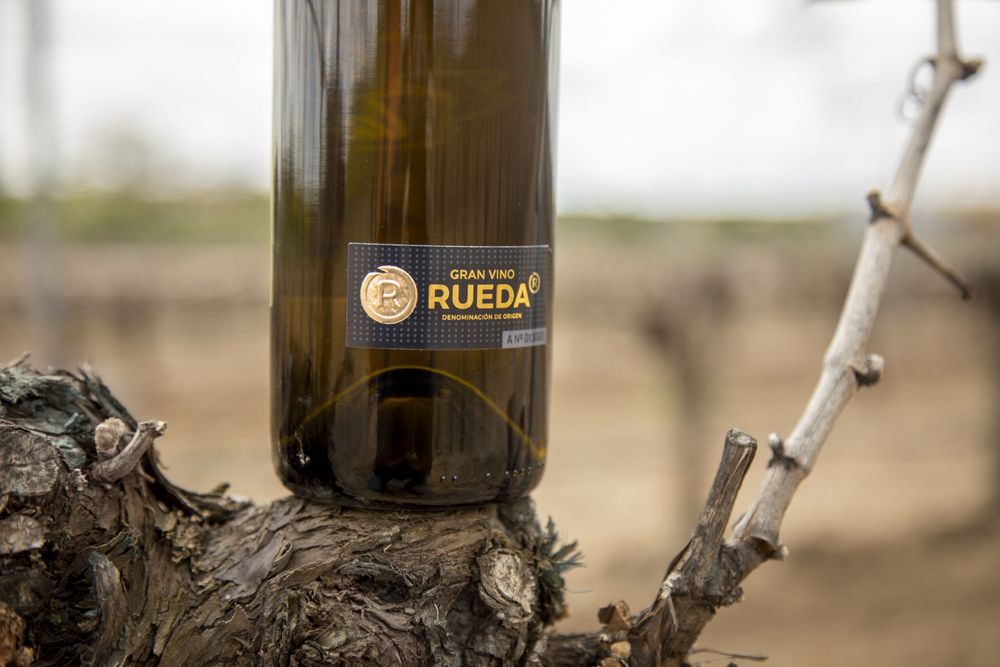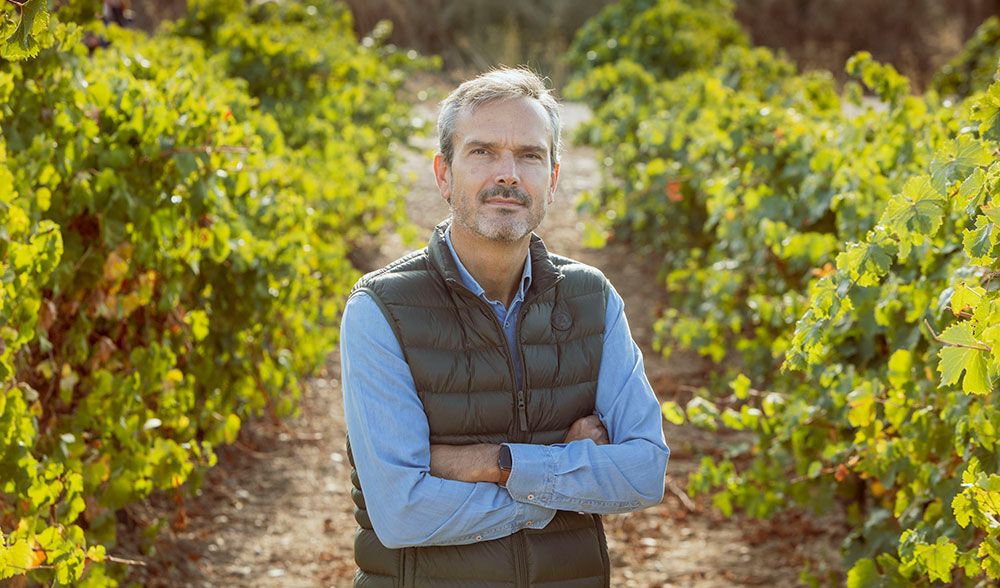As the trade and consumer’s collective palate opens up to more bright, refreshing, and fruit forward wines then the future can only be equally bright for a region like Rueda, with its range of fresh, vibrant white wines – driven by the increasingly in demand Verdejo variety.
The fortunes of Rueda as a wine region and the popularity of white wines in general go hand in hand. It’s why Rueda is enjoying its most successful period, both in Spain and overseas, as demand for its fresh, vibrant and refreshing wine styles – driven by Verdejo – increases every year.
It was certainly not the case 10 to 15 years ago when only 15% of Spanish wine drinkers would ever turn to a bottle of white wine. Now white wine accounts for nearly a third (30%) of all wine sold in Spain and its influence on the white wine category as a whole gets stronger as more retailers and restaurants get behind the fresh styles of wine it is producing.

Santiago Mora, head of Rueda’s governing body, says the region is now making wines in keeping with what consumers in its key European markets want – particularly the UK
Santiago Mora, who is now into his seventh year as head of the region’s Consejo Regulador de la Denominación de Origen, says the wine consumer in Spain “has changed dramatically in last five to 10 years” and is now much more in keeping with the styles of wine that are doing so well in the UK and Germany.
“These new consumers like Verdejo and are looking for different styles of white wine to enjoy,” he says.
Which, in turn, is encouraging more producers to change tack and invest more in producing quality, fresh white wines.
But Mora is also very aware that Rueda still needs to prove itself to a lot of wine consumers, both in Spain and abroad. It’s why it continues to work so hard in raising its profile and significance within Spain as it accounts for around 85% of its sales.
The last two years of Covid-19 and nationwide lockdowns has actually been a major boost for Rueda as a wine region, even if initially most local producers feared the worst.
Going into Covid-19, Mora says Rueda was worth 11.5% of the overall Spanish wine market and made up 16% of the country’s on-trade, the second highest in the country and 10% in the off-trade, the fifth biggest share. But when the on-trade was forced to close it initially raised serious concerns in the region about the initial and long-term impact it would have on its producers.
Building on momentum
Fortunately, Rueda went into the pandemic with real momentum, stresses Mora, on the back of a record year in 2019. There were hopes that 2020 would result in a further 10% increase in sales and see Rueda break through the 100m bottle barrier for the first time.
“And then suddenly everything changed,” he says, and the region immediately made plans for a minimum 20% loss in sales.
The reality, however, was somewhat different. “We can now appreciate how strong the Rueda brand is in Spain. When people had to stay at home, they looked to drink Rueda and asked for it and looked for it in their local supermarkets,” says Mora.

Rueda has enjoyed a record performance during Covid
“People were looking to drink wine they knew and were comfortable with and that’s what is happened with Rueda. We were very worried at the beginning of Covid, but we have seen much more positive results. Which is down to the strength of the brand.”
In the end overall Rueda sales in Spain were only down 10% in 2020, thanks to the big jump in retail sales, with supermarkets increasing their sales of Rueda in some of the early months of lockdown by 60% per week. Export sales were also up 3.5%.
It was able to take build on that success in 2021 where every month Rueda was reporting its previous four weeks figures. “It was crazy,” he says.
Record position
It means Rueda is now coming out of Covid-19 in a very different position in Spain to where it was two years ago. It has seen a 22.5% increase in sales on 2020 and reached its 100m bottle target in 2021 with 102m bottles sold and hopes to reach 110m in 2022. Although Mora says prices did take a bit of a hit such was the new competition and high demand in the off-trade. Rueda now sits proudly as Spain’s third biggest appellation in retail up from fifth pre-pandemic.
“The recovery has been incredible for us and we did not expect that,” says Mora.
It looks like the success is going to continue in 2022 with strong sales in January and February. Mora says it is still waiting to get its official export figures for 2021 but is hopeful that they could result in a record year, with more than 14m bottles sold, an increase of around 10%.
“We are very happy and seen good growth across our main European countries.”
Crucially Rueda has been able to avoid the major weather problems that hit so many other main wine producing regions in Europe and is in a good position to capitalise on its expected record exports thanks to two strong vintages in 2020 and 2021.
The 2020 harvest was its second highest production ever with 112m kilograms of fruit picked, just behind the 125m kilograms in 2018.
Export strategy

Rueda is focused on building its exports in 12 key markets
Rueda has 12 key export markets it focuses on around the world and like so many other regions had to switch its strategy from consumer tastings and trade fairs to running all its activities online.
“We were, though, able to adapt to the new circumstances well and we worked hard to do virtual tastings and media conferences online. We used the time well,” he says.
Even with all its reduced in-market activity it was still able to maintain 70% of its overseas activity. “We were able to use our website to show what wineries were doing online and how we are working in different markets,” he explains.
Gran Vino de Rueda
The quality and profile of Rueda wines have certainly been helped by the introduction in June 2021 of a new category of wine – Gran Vino De Rueda which can only be made from “the highest-quality raw material”.
The aim is to encourage winemakers to experiment and look to maximise the potential of the grapes they are working with, and, in particular, Rueda’s native grape, Verdejo. “We want to demonstrate its versatility and ageing capacity, making wines that position the Rueda brand among fine dining,” is how Carmen San Martín, president of Rueda’s Designation of Origin introduced the new category at the time.
All wines that reach the quality criteria will be able to be use a special back label featuring a black and gold design, chosen to convey a sense of “elegance and exclusivity”.
It also looks to highlight the old vines that Rueda has with each Gran Vino de Rueda coming from a minimum 30-year-old vine and a maximum of 6,500 kg of fruit picked per hectare compared to the average of 10,000 kg per hectare.

The new Gran Vino de Rueda classification is for wines made from 30 year old plus vines
Mora says it will be interesting to see how these wines emerge over the coming years and what potential there is some of the region’s older vineyards to make wines that take Verdejo, in particular, to another level.
It is part of a new era of experimentation in the region, he adds, with a wider use of foudres, concrete eggs and different sized casks for ageing.
“Wineries are trying new ways to make wine that are more suited to the new consumer, first in Spain and then abroad,” he says.
He says he is particularly pleased with a recent Decanter Rueda tasting that saw over 30 wines featured score over 90 points with four of the wines being Gran Vino de Rueda.
“This is all the result of this work to put even more focus on quality, and to make changes that make our wines better, more versatile with greater diversity. This is our way forward.”
That also includes re-introducing old styles that have fallen out of favour including Dorado and Pálido – the region’s own sherry style. This can only help drive more interest in what the region is capable of, says Mora, although it will a few years before we see their real potential.
The UK opportunity
The UK remains a key export market for Rueda and it too is on the comeback trail after being hit by Brexit and a falloff in demand that saw its annual exports drop down to 400,000 bottles in 2018. It is now back closer to 700,000 bottles.
“The UK market is important not just for the number of bottles of wine sold there, but how it influences so much of the rest of the world. It is very important to pay attention to what is happening in the UK as it can inform so much of what you do elsewhere in the world,” explains. Mora.
It’s also the best market to communicate the new trends taking place in Rueda to the rest of the world, he adds.
It’s why it will continue to invest in telling its story to the key media and then out to wine stores, independent wine merchants and to the wider on-trade.
The UK, though, has some way to go before it is up to Rueda sales in Germany (2.8m bottles) and then its number one market, the Netherlands (5m bottles). But the demand for more is certainly there…
- You can find our more about Rueda wines at the governing body’s website here.


































